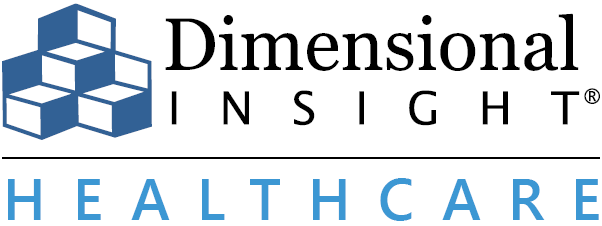
The Role of Data in Solving Top Surgery Department Challenges Introduction

The Role of Data in Solving Top Surgery Department Challenges Introduction
Each year, an estimated 40 to 50 million surgical procedures are performed in the
United States alone. The increased prevalence of cancers and chronic diseases, coupled with an aging global population, is projected to further fuel the demand for surgical interventions worldwide. By 2028, the annual rate of surgeries is forecasted to rise by 3.4%. Concurrently, the surgical industry continues to push the boundaries, with innovations in surgical technologies and procedures transforming the landscape.
However, this rapid rate of growth presents its own set of challenges, especially for hospitals striving to achieve optimal operational efficiency. The smooth running of an Operating Room (OR) could quite literally mean the difference between life and death. Efficient workflows, seamless communication, and proficient operations within an OR can pave the way for improved patient outcomes, as well as ensure financial success for hospitals.
Recently, the spotlight has been cast on the burgeoning field of surgical data science and its potential in allowing hospitals to harness their existing clinical and operational data to fine-tune OR efficiency. Many studies have highlighted the inefficiencies of ORs, as “patient data and images are not well integrated or displayed in a timely fashion. This lack of integration of technology and information further strains the system, resulting in further reductions in efficiency. This, in turn, potentially impacts patient safety and costs.” When hospitals don’t efficiently leverage their surgical data, it can lead to poor operating room performance.
This whitepaper examines the pivotal role of data in addressing the most pressing challenges faced by surgery departments. By approaching operational trends in their surgery departments with an analytical lens, hospitals can effectively tackle issues pertaining to:
Operating Room Efficiency
Cost Containment
Operating Room Utilization
Quality and Safety Concerns

The Challenge: Operating Room Efficiency
Operating rooms need to run like well-oiled machines, not only to guarantee operational efficiency but also to ensure patient safety. Yet, data shows that, on average, 2 hours of operating room time are lost daily due to avoidable delays. These inefficiencies can cause significant issues, leading to loss of revenue, patient dissatisfaction, and improper utilization of staff resources, all potentially impacting the overall quality of care.
Furthermore, OR efficiency is heavily impacted by staff turnaround time (ToT) between procedures. Turnaround time can be affected by various factors such as the team composition, the hour of the procedure, and the degree of efficiency training provided. To achieve an optimal turnaround time and mitigate delays, surgery departments need a comprehensive understanding of their surgical operation trends, something which is only possible with a data-informed perspective.
Research indicates that operating room efficiency can be improved “by analyzing operating room data on causes of delays, devising strategies for minimizing the most common delays, and subsequently measuring delay data.”
How analytics can help
Hospitals can optimize operating room efficiency with reporting and analysis solutions that offer insight into key drivers of throughput. For example, a data-centric approach can empower hospitals to examine and analyze case volumes by specialty and type. By leveraging historical case information, department administrators can optimize case scheduling, aligning it with established patterns and insights.
Hospitals can maximize OR efficiency with a robust reporting and analysis environment that illuminates the key drivers of throughput, such as:
Case Volumes — By tracking case volumes by specialty and type, hospitals can identify patterns and benchmark performance across different facilities, enabling strategic adjustments.
Room Turnover — By analyzing turnover time by room, facility, or surgeon, as well as considering variations by time of day, day, week, month, or quarter, hospitals can uncover valuable trends to guide staffing and scheduling decisions.
Late Starts & Delays — By examining late first case reports by day, day of the week, and surgeon, administrators can pinpoint specific areas for improvement and identify potential solutions.
By using data insights and trends to refine operating room scheduling, hospitals can adapt their operations to meet rapidly evolving needs, allowing them to perform at maximum efficiency. This data-driven approach allows surgical departments to continuously monitor and enhance their efficiency, yielding a higher level of patient care and satisfaction.

The Challenge: Cost Containment
According to OpenAnesthesia, hospital operating rooms account for roughly 40% of total hospital expenses and generate around 70% of the revenue. As such a substantial part of a hospital’s finances, it is critical for the OR to operate efficiently. The major expenses in the OR include staff labor and materials, such as sutures, surgical drapes, and anesthesia medications.
Hospital expenses have continued to rise in recent years, with labor expenses increasing by 19.1%, drug costs skyrocketing by 36.9%, and supply costs growing by 20.6%. In the face of such soaring healthcare costs, OR cost containment has become a top priority for hospitals. Additionally, as the healthcare payment landscape continues to transition from fee-for-service to value-based reimbursements, optimizing the performance of surgical services is vital.
How analytics can help
To effectively contain OR costs, hospitals need complete transparency and easy access to cost information so that they can easily identify ways to better manage costs and capture more revenue. Visibility into department-wide trends or even granular, case-level details can help hospitals detect cost variations due to a lack of standardization. Efficient utilization of labor and supplies is a major goal for hospitals seeking to contain surgical costs. To identify ways to maximize revenue, hospitals need a holistic view of their surgical operations, with an eye toward data. A sophisticated analytical approach can empower surgery departments to:
Identify the surgeons and procedures impacting OR financial performance
Analyze trend costs in staffing and labor
Examine trends in supply and implant costs
Armed with comprehensive data, surgery departments can identify which aspects of their OR operations are thriving financially and which areas need improvement. This birds-eye view of expenses and performance can enable surgery administrators to effectively contain costs and maximize revenue. Improving cost management in the OR can be simple when department administrators are armed with a wealth of accurate, timely data.

The Challenge: Operating Room Utilization
Operating Room (OR) utilization is a primary KPI for the success of any surgery department. Striking the right balance in OR utilization is a necessity for hospitals. Under-utilization can result in lost revenue and wasted physician time, while over-utilization may lead to staff fatigue and escalate the risk of medical errors. Studies suggest that the ideal OR utilization rate hovers between 85% to 90%, allowing efficient workflow without incurring delays or extending schedules. So, how can hospitals ensure they achieve optimum OR utilization?
Scheduling procedures appropriately, according to the time each requires, is crucial for efficient OR utilization. However, to accurately estimate the time needed for each procedure, hospitals need a reliable source of data to underpin their scheduling strategies. For hospitals to best understand their utilization needs, they can compare utilization across similar surgical procedures by surgeon, surgical teams, or facility. Hospitals also need a robust understanding of block utilization patterns to optimize block allocation, further improving the precision of scheduling and reducing potential downtimes.
How analytics can help
Hospitals can maximize OR utilization with visibility into the key drivers of resource utilization, such as:
Facility Utilization — By tracking utilization at the room or facility level, hospitals can make informed adjustments to their available capacity. This helps maximize the return on investment of surgical facilities, balancing resources with demand.
Prime Time Utilization — Evaluating utilization during both prime and off-peak hours provides a comprehensive view of the operating schedule. It assists in identifying opportunities for better resource allocation and managing patient flow.
Block Utilization — Analyzing block time utilization ensures that physician OR time is being used effectively, driving productivity enhancements and reducing wasted resources.
In essence, a robust analytics approach empowers surgical departments to optimize resource utilization. It allows for a deeper understanding of operating patterns, highlights inefficiencies, and provides insights for improvement. Armed with these insights, hospitals can more effectively manage their ORs, ensuring they are used efficiently and effectively to deliver high-quality patient care.

The Challenge: Quality and Safety
Patient safety and quality of care are of paramount importance in every hospital, especially when it comes to surgical procedures. The journey toward ensuring safety and quality in the OR starts well before a patient reaches the operating table. It is built on a foundation of coordinated care throughout the entire department, underscoring the need for meticulous planning, communication, and collaboration among the surgical team. Nevertheless, surgical medical errors persist, with at least 4,000 reported annually, costing hospitals an average of nearly $1.5 billion per year.
The American College of Surgeons notes that “lack of effective communication and failure to coordinate care are the most common causes of medical errors.” Cultivating a surgical environment rooted in consistency and informed by data can help prevent these costly and dangerous medical mistakes, and can further foster a culture of safety and continuous quality improvement.
How analytics can help
For ORs to avoid medical errors, everyone in the department plays an important role in coordinating quality care. From administrative staff to nurses and surgeons, everyone in the department must have access to consistent, reliable data. Harnessing the power of data analytics, surgery departments can gain insights into their operational safety measures, compare them to national benchmarks, and identify areas for improvement.
A data-driven approach enables OR leaders to identify provider-level trends, to see if particular physicians require additional training or supervision. Additionally, data can show department administrators if they are meeting quality compliance standards, enabling proactive adjustments and improvements in line with evolving healthcare regulations and patient expectations.
Leveraging data, surgery departments can:
Compare quality and safety across similar surgical procedures by surgeon and surgical teams, specialty, or facility
Monitor patient satisfaction data by surgeon, specialty, and facility
Understand patterns and track trends for compliance protocols, such as Surgical Care Improvement Project (SCIP) measures
The consistent use of surgical data analytics not only assists in identifying gaps and inconsistencies but can also help in devising effective solutions. Data in the OR can offer an objective basis for decision-making and problem-solving, fostering a culture that prioritizes patient safety and the delivery of high-quality care.
Conclusion
Operating rooms and surgical departments face unique challenges and smooth administration can be the difference between life or death. Data plays a major role in identifying trends in the OR and improving outcomes. A recent article on surgery trends in the Journal of The Society of Laparoscopic & Robotic Surgeons reported that integrating data-driven solutions “along with teamwork and enhanced communication and coordination among services, providers, and staff, is essential to improve efficiency, enhance safety, and reduce the cost of care.”
With advanced analytics solutions, surgery department leaders can analyze and compare practice patterns of utilization, efficiency, costs, and outcomes among individual surgeons, services, and facilities. Information is quickly available—from current schedule to late first cases, block and facility utilization, and turnover times—via dashboards, reports, and ad hoc analytics. A solution like Dimensional Insight’s Surgery Advisor provides users access to surgery department case volumes, throughput, and other financial performance and utilization measures. These advanced metrics can allow clinicians to find improvement opportunities in care delivery and operations. The practical application of surgical data analytics can pave the way toward advanced patient-centric care, superior surgical outcomes, and enhanced operational efficiency in the OR.
About Surgery Advisor
Give your operating room directors timely access to the operational, financial, and clinical metrics they need to manage operating room facilities at peak performance.
Surgery Advisor, powered by the award-winning Diver Platform, empowers you to optimize operating room efficiency.
Surgery Advisor comes with more than 73 out-of-the-box measures that can be quickly implemented in your hospital. Information is quickly available—from current schedule to late first cases, block and facility utilization, and turnover times—via dashboards, reports, and ad hoc analytics.
Surgery Advisor provides users access to surgery department case volumes, throughput, and other financial performance and utilization measures via Diver’s analytical dashboards.
The application automates the integration and transformation of data from preoperative, EHR, financial, facilities, quality, and safety systems. This eliminates time-consuming and manual data gathering, aggregation, and calculations.
The application allows users to gain visibility into OR operational performance with consolidated views of core surgical activities and metrics that summarize and provide detail on efficiency, utilization, costs, and surgeon performance.
Download white paper:
The Role of Data in Solving Top Surgery Department Challenges Introduction

